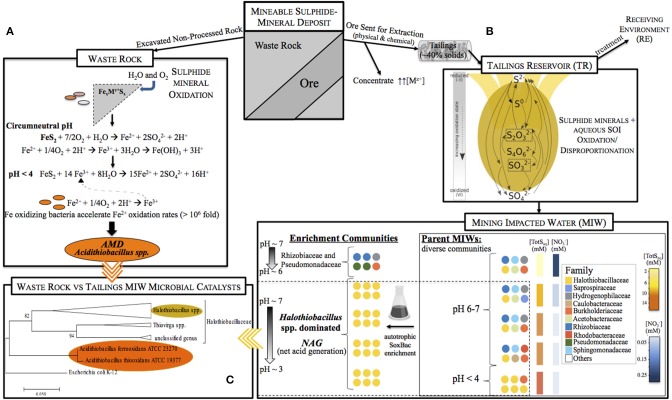Figure 5.
Mining of FeSx minerals creates sulfide rich waste rock (A), as well as post extraction sulfide rich tailings managed in tailings reservoirs (B). Results of this study show that the sulfur geochemical reactions that occur, as well as the important microbial players associated with either AMD (A) or NAG (B) conditions in these two contexts differ. Waste rock contexts are dominated by Fe and S oxidizing acidophiles associated with the iron and sulfur rich minerals hosted in these materials (A). In contrast, tailings reservoirs exhibit far greater geochemical diversity and sulfur compound complexity (B). Results here identify that parent microbial communities differ across tailings reservoir MIW samples consistent with variable geochemistry (B). However, SoxBac enrichments experiments identify the genus Halothiobacillus spp. as an important driver of NAG generation that appears widespread within these tailings reservoir MIWs. (C) Phylogenetic relationship/distance between Halothiobacillus spp. and Acidothiobacillus ferridoxans (a well-known organism associated with AMD conditions) indicate that these are not closely related organisms indicating that AMD based understanding of microbial sulfur cycling will not accurately reflect NAG generation within tailings reservoirs.

